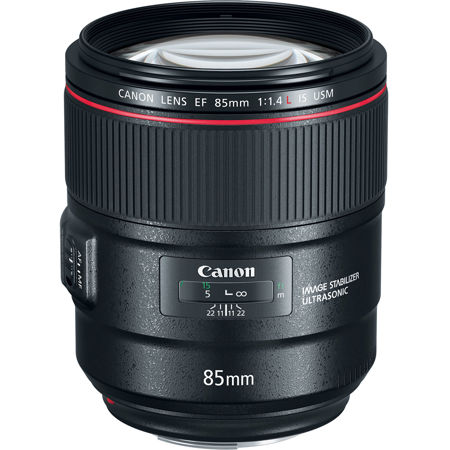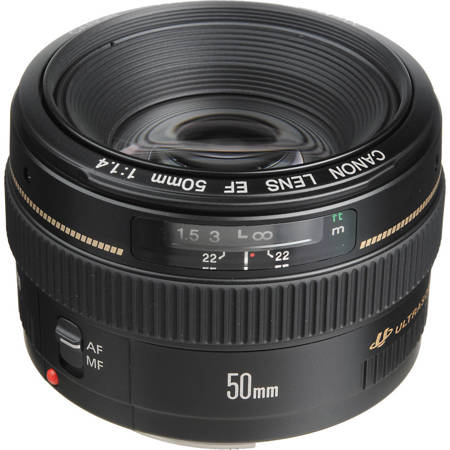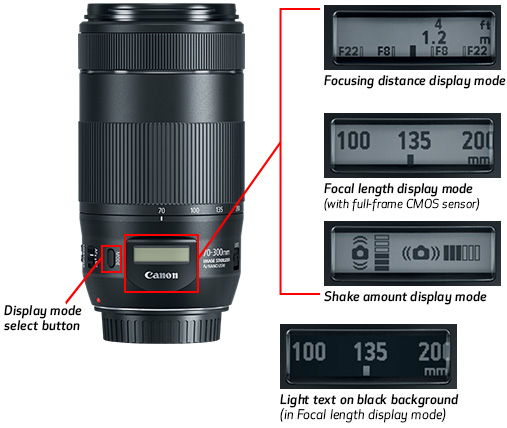Hyperlocal markings on digital camera lenses?
Jan 22, 2020 22:03:59 #
RWR
Loc: La Mesa, CA
JohnSwanda wrote:
For me, using DOF preview, especially with higher f-stops, makes the image viewed too dark to be useful.
Right. Even with the excellent bright-view focusing screens we have today, f/8.0 is about the limit.
Jan 23, 2020 06:19:06 #
I guess I always assumed hyperfocal referred to the focus point at which maximum DOF is achieved at a given aperture, whereas reasonable sharpness will be obtained 1/3 in front and 2/3 behind the point of focus.
Jan 23, 2020 06:26:24 #
Tomfl101 wrote:
I guess I always assumed hyperfocal referred to the focus point at which maximum DOF is achieved at a given aperture, whereas reasonable sharpness will be obtained 1/3 in front and 2/3 behind the point of focus.
That’s exactly what hyperfocal distance should is.
Jan 23, 2020 08:09:38 #
Tomfl101 wrote:
I guess I always assumed hyperfocal referred to the focus point at which maximum DOF is achieved at a given aperture, whereas reasonable sharpness will be obtained 1/3 in front and 2/3 behind the point of focus.
That happens at only one specific focus distance.
Beyond that distance it eventually stretches to infinity. At very close focus distances it approaches 1:1.
Jan 23, 2020 11:11:12 #
amfoto1
Loc: San Jose, Calif. USA
rb61 wrote:
Why do these marking seem to be missing on most?
It's not a "hyperfocal" marking. It's a Depth of Field scale in combination with a Distance scale (which can be used to determine hyperfocal focusing distances, among other things).
Most lenses today are zooms..... It's very difficult to provide a Depth of Field scales on zooms, because the scale changes at different focal lengths.
Also, many modern zoom lenses are varifocal designs. This means they don't maintain focus when the focal length is changed. Therefore, there's no set link between the distance the lens is focused and any given point on the manual focus ring. It's not possible to provide even a Distance scale on a varifocal zoom, let alone a DoF scale along with it.
Further, many modern zooms and some primes are "fly by wire". There's no direct mechanical connection between their focus ring and the internal focus mechanism of the lens. Instead there are sensors that detect movement of the focus ring and send a signal to some sort of servo inside the lens, which in turn moves the focusing elements of the lens. When a fly-by-wire lens is set to AF mode, it may be that the manual focus ring is fully disconnected and can be turned freely, with no effect on the lens. That's another circumstance where no engraved Distance or DoF scale would be feasible.
And, many modern lenses don't have "hard stops" at infinity. They actually can focus past infinity. Setting an infinity stop and engraving a Distance scale on a lens require calibration. (It's been noted that some lenses with Distance scales aren't very accurate.)
Engraved DoF and Distance scales are really only practical on wide angle primes, where DoF is deep. On telephotos DoF becomes so narrow that it's hardly worth marking them. For example, look at the distance scale on the Canon EF 135mm f/2L lens... It only shows f/32, the smallest aperture that can be set on the lens, and are so close together beside the distance scale as to be virtually useless. Even the new Canon EF 85mm f/1.4L (shown below) has minimal information, due to shallow DoF when stopped down.... it's engraved with only f/11 and f/22 DoF markings, adjacent to the distance scale.

This is nothing new. Even older zooms typically had minimal or no DoF scale and even a 50mm lens can't display a great deal of info. For example, the Canon EF 50mm f/1.4, which dates to the days of film (mid-1990s), only has minimal info.

A wide angle prime like the Canon EF 20mm f/2.8 has a bit more DoF info:

I'm using Canon examples, but the same will be true of any manufacturer's lenses with similar focal lengths. (Above images courtesy of Adorama.)
However, there's hope!
Canon EF 70-300mm IS USM "II" zoom uses an interesting LCD Distance and DoF display. If this becomes common on more lenses, there is potential for zooms to provide accurate Distance and DoF info even as the focal length is changed.

That LCD screen on the lens can be set to show different information, as shown above. One of the display modes has Distance and DoF info, although the latter is quite shallow on all the telephoto focal lengths of this particular zoom. It would be interesting to see an LCD screen on a wide angle zoom, where it will no doubt be considerably more useful. Imagine if Canon updated the excellent EF-S 10-22mm or EF 16-35mm f/2.8L USM III lenses with an LCD screen:


Another approach is to provide the Distance and DoF info on the camera's LCD monitor, or even in an Electronic Viewfinder, instead of on the lens. The Canon EOS R-series cameras and RF lenses are doing this. The lenses have very Spartan, "less is more" styling... no Distance scales and certainly no DoF info. Instead you can choose to have that information displayed as an overlay on the rear LCD monitor and in the camera's viewfinder: I'm sure some other mirrorless do similar. I'm just using Canon examples because that's the system I use and am most familiar with. (Images courtesy of Canon USA.)
Jan 23, 2020 12:01:18 #
Leitz
Loc: Solms
RWR wrote:
I’m not familiar with any lens with hyperfocal markings.
Neither is anyone else ... as far as I know, no lens manufacturer is dumb enough to put hyperfocal markings on their lenses.
Jan 23, 2020 12:15:00 #
selmslie wrote:
That happens at only one specific focus distance. ...
If you use a DoF calculator you will find that the 1:2 ratio happens only at about (hyperfocal distance)÷3.
Jan 23, 2020 13:08:39 #
selmslie wrote:
10 feet is still not the hyperfocal distance.
It's just the distance on which you are focused
- the focus distance.
When you focus at the hyperfocal distance, the
far limit is at infinity and the near limit is one
half the hyperfocal distance.
..............
10 feet is still not the hyperfocal distance.
It's just the distance on which you are focused
- the focus distance.
When you focus at the hyperfocal distance, the
far limit is at infinity and the near limit is one
half the hyperfocal distance.
..............
Yup. Far limit at infinity, thaz the classic definition.
Acoarst that 10 ft focus point WOULD be the real
hyperfocal distance at whatever stop puts infinity
focus at the far limit :-)
I don't even recall the term hyperfocal "distance"
ever spoken that way. It was always hyperfocal
"setting", which meant looked at your DoF scale
and estimated your desired DoF range, such as
5 to 30 feet, and selected a marked pair on the
DoF scale that where you could set the 5 ft and
the 30 ft at the limits ... not paying attention to
the actual true focus distance. If a single subject,
rather than a deep scene, was important, you'd
focus on THAT, check your DoF preview or scale,
and acoarst no "hyperfocal setting" was used.
============================
Basically, hyperfocal setting was the "box camera"
focus for whatever stop is in use ... acoarst ruling
out the few box cameras that had 2 or 3 f/stops !
Remember the old zone focus graphic symbols of
"1/2 person", "3 persons", and "Mountains" which
meant, approximately, 3.5 ft, 10 ft, and "distant" ?
I once had a symbol-focusing camera where the
focus symbols were in 3 distinct colors and 3 of
the f/stops were in corresponding colors, so you
could pick the f/stop whose DoF included infinity
or distant focus to match that zone focus symbol.
Obviously f/22 for the "1/2 person" symbol, and
then wider stops for the other 2 zone symbols.
I don't remember what zone focusing camera she
had, but I had a partner who could not estimate
even the zone symbols. She would point toward
a subject and ask me "Is that 1 people, 3 people,
or mountains ?"
Jan 23, 2020 13:53:42 #
RichieC
Loc: Adirondacks
selmslie wrote:
1. With autofocus lenses they would be too close together to be readable.
2. On manual focus lenses they only give you a very rough estimate of DOF.
In either case they are relatively useless.
2. On manual focus lenses they only give you a very rough estimate of DOF.
In either case they are relatively useless.
They are NOT useful in macro photography, or short dof uses - ie to achieve bokeh where you focus on a single point- but this is not how or why they are used at all and has never been the intention of their continued use.
I have mostly primes and they ALL have them. ( Your lens DOF usually has wasted space in focus at the very farthest point you are shooting from. At a aperture you choose, Usually the one that delivers the sharpest detail ( f-8 or f-11- every lens has a different sweet spot), you can judge how to move the dof toward you. . Like a flower in foreground with mountains in the distance. If your focus point is pasted on the flower, your forward dof will be in essence behind you, and the dof will end closer than the farthest mountains- they will be blurry so you are wasting DOF. thus you want to focus past the flower - somewhere in space, yet still want it to fall within the in-focus DOF area of that aperture/lens... without figuring it out in the viewfinder while laying on your stomach or at sunset when you can't see...! if only there were marks to help you through this! LOL.
So they are VERY useful when you want the widest MOST ACCURATE DOF possible for that lens. SUch as landscape photography and in low light, if you are shooting manual and on a tripod- you know like Ansel Adams who used them. . It works flawlessly if this is your workflow- and useless if it isn't.
You do have to learn how to use them and understand what they are for, and really important if you want to critique their usefulness.
My lens I most often use them is my Milvus 21 and 85 on my D800e mounted on my tripod.
Jan 23, 2020 13:55:38 #
User ID wrote:
Yup. Far limit at infinity, thaz the classic definition.
Acoarst that 10 ft focus point WOULD be the real
hyperfocal distance at whatever stop puts infinity
focus at the far limit :-) ...
Acoarst that 10 ft focus point WOULD be the real
hyperfocal distance at whatever stop puts infinity
focus at the far limit :-) ...
Only problem is that this puts the cart before the horse.
The formulas for DoF can be found at Depth of field. DoF is calculated in the following sequence:
1. Select the format. For example, 24x36 mm which has a a diagonal of 43.27 mm.
2. Calculate the size of the circle of confusion. For example 43.27 ÷ 1500 = about 0.029 mm. The 1500 constant is arbitrary, some prefer 1750.
3. Select an aperture. For example, at f/11 the hyperfocal distance is 25.88 feet.
4. Pick a focus distance and then calculate the near and far limits. In this example, focused at 10 feet the near and far limits are 7.2 and 16.3 feet.
5. The DoF is (far limit)-(near limit) or 16.3-7.2=9.1 feet.
A DoF calculator does all of this for you but most people don't even bother with a DoF calculator. That's OK so long as you understand the basic principles.
For more on the subject see What is wrong with Depth of Field and Hyperfocal Distance?
Jan 23, 2020 14:05:30 #
RichieC wrote:
They are NOT useful in macro photography, or short dof uses - ie to achieve bokeh where you focus on a single point- but this is not how or why they are used at all and has never been the intention of their continued use. ....
They are not even useful for normal photography since the markings on the lens barrel are vague and hard to read.
Playing with a DoF calculator will give you a better idea of how it works.
Once you know the principles and try a few examples with your own subject matter and lenses you can ignore the markings on the lens and set the DoF calculator aside.
If you want to reply, then register here. Registration is free and your account is created instantly, so you can post right away.


